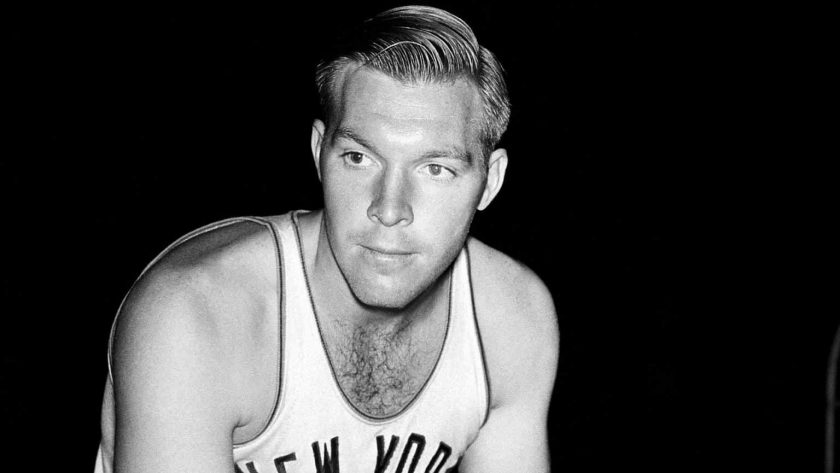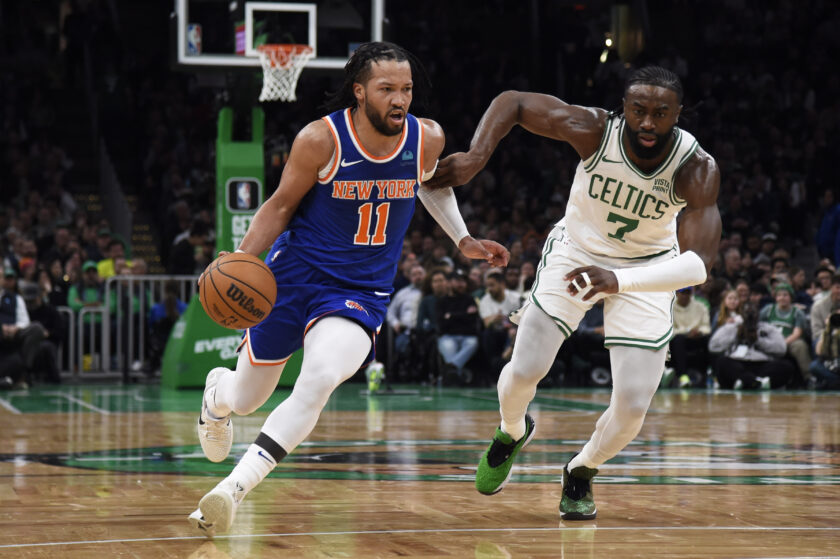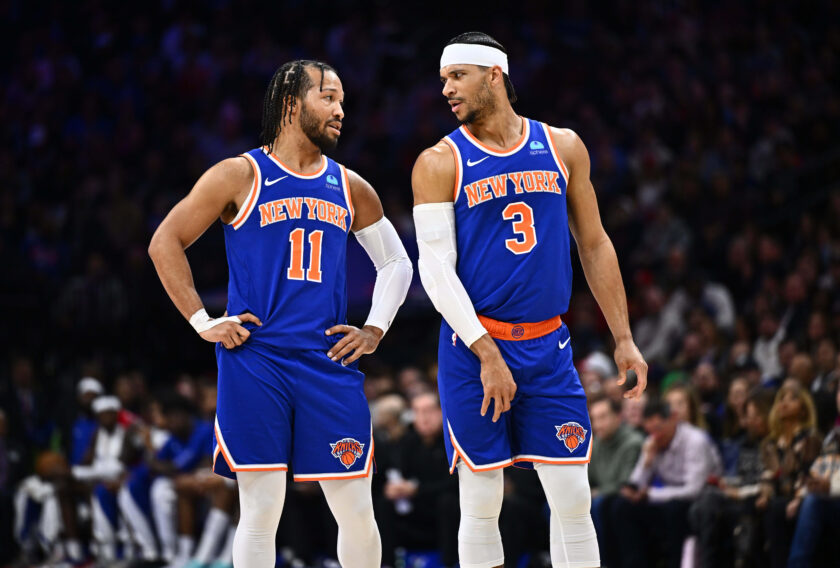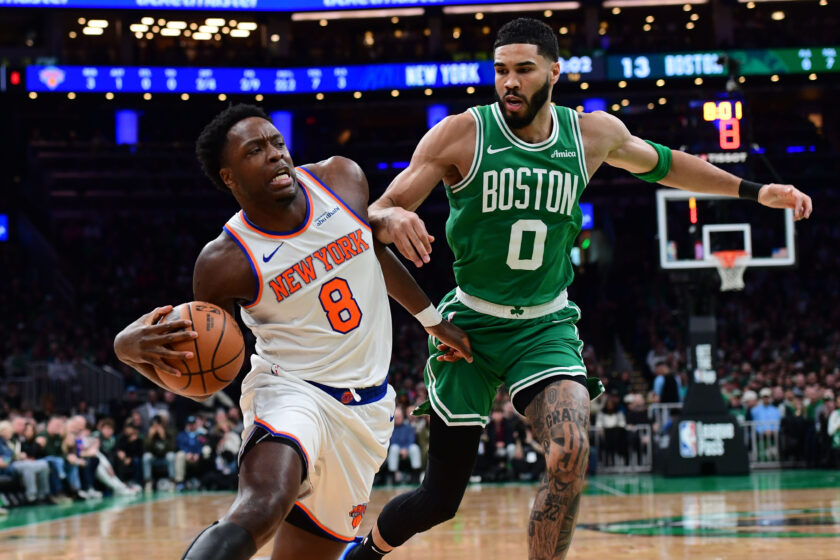New York Knicks: Drafting the All-1950s Team

Of all the players the New York Knicks had in the 1950s, these five easily make up the squad that defined the decade.
[sc name=”josh-benjamin-banner” ]The New York Knicks have a whole lot of history.
“Thank you, Captain Obvious,” all readers said simultaneously.
Okay, that’s a very generic statement, but it’s true. The Knicks have been around since the NBA’s inception in 1946 and have 23 Hall of Fame players to their name. Not all are necessarily career Knicks, mind you, but it speaks to the significance of the city and the team’s history. Regardless of New York’s performance, being part of the Knicks means something.
But as a fan, it isn’t so easy. The current season was lost even prior to the coronavirus-related interruption. Thus, New York fans like to remember better times and better days. You know, when the Knicks were actually a well-rounded team and not a hastily constructed roster.
Thus, in the first part of an ongoing series, let’s look at the Knicks through the decades and build the best teams from each. Shine your blue suede shoes and get ready for the All-1950s Team.
PG Dick McGuire (Knicks tenure: 1949-57)

Every Knicks fan has heard of Dick McGuire in some capacity. It’s mostly because he was a successful point guard for the Knicks in the 1950s, but McGuire was so much more than that.
The former St. John’s star was drafted by the team with the No. 7 pick in the 1949 BAA Draft, back when the NBA was the Basketball Association of America. This wasn’t particularly significant, given only 12 teams existed at the time.
And, to be completely honest, McGuire wasn’t particularly great on offense. He never averaged more than 9.2 points per game. He shot just 38.9% from the field for his career and just 64.4% from the line. Even with a true shooting percentage of 45.5%, offense wasn’t his strong suit.
However, this was still a young professional basketball league learning how to put together entertaining teams, so McGuire wasn’t alone in his struggles. Plus, as can be seen in the video above, the slight six-footer had a knack for making beautiful passes to teammates.
McGuire was traded to the then-Fort Wayne Pistons in 1957 and spent three seasons introducing the organization to Detroit before retiring to coach the team full-time. In 1965, he was hired to coach the Knicks and held the job for three seasons.
Throw in the retirement of his No. 15 jersey and a spot in the Hall of Fame, and McGuire is definitely the point man who defines the 1950s Knicks.
SG Carl Braun (Knicks tenure: 1947-50, 1952-61)

If you want an early look at what a reliable shooting guard looks like, Carl Braun is a prime example. Originally a New York Yankees pitching prospect, Braun signed with the Knicks after an injury ended his baseball dreams.
Like his longtime teammate McGuire, Braun’s percentages look a little rough at face value. He only shot 38.3% from the field for his career.
But Braun was so much better than that number suggests. His long-range shooting left fans and opponents alike with their jaws on the floor. He made 80.4% of his career free-throws attempts, while McGuire sunk a meager 64.4%.
Richie Guerin shouldn’t be ignored when it comes to this discussion, but Braun was just in New York longer and made his mark last. He averaged 14.1 points per game as a Knick and was a five-time All-Star. Last year, nine years after his 2010 death, Braun was inducted into the Hall of Fame.
His lone championship may have been with the Boston Celtics at the end of his career, but Braun’s contributions to the Knicks speak for themselves.
SF Kenny Sears (Knicks tenure: 1955-61, 1962)

The Knicks drafted Kenny “Big Cat” Sears with the No. 4 pick in the 1955 draft, and the California boy quickly made his mark. At 6-foot-9, 198 pounds, Sears had the size to create mismatches at power forward as well as the athleticism to play the wing.
And because players of his height were still unique to the NBA in the ’50s, Sears twice led the league in field-goal percentage. He averaged 16.2 points and 9.2 rebounds as a Knick while shooting 45.2% from the field, which was quite good in that era.
In fact, Sears was a maestro with his shooting touch. He led the league in true shooting percentage three years in a row and led in offensive win shares for the 1958-59 season.
And the hype didn’t start in New York. A star at Santa Clara, Sears was the first-ever basketball player to make the cover of Sports Illustrated. Between that and the success he had as a Knick, he’s perfect for this all-decade team.
PF Harry Gallatin (Knicks tenure: 1948-57)

Harry Gallatin played a larger-than-life game for someone just 6-foot-6. He was practically a double-double machine and wasn’t afraid to stand and bang in the paint. Gallatin averaged 11.9 rebounds for his career and led the league with 15.3 per game in the 1953-54 season. Gallatin’s strong efforts on the court thus earned him the nickname “The Horse.”
As for his offense, Gallatin’s game wasn’t as pretty. He only averaged 13 points for his career and shot 39.8%. Despite that, he was adept at stretching the floor and his signature one-handed shot captivated fans throughout his career. Moreover, his career true shooting percentage was a respectable 49.7%.
After retiring in 1958, Gallatin coached at Southern Illinois from 1958-62 before returning to the NBA. The Hall of Famer coached the St. Louis Hawks from 1962-65 before coaching the Knicks for parts of two different seasons.
Gallatin’s name flies under the radar, but his contributions to the Knicks in the 1950s should never go unnoticed.
C Ray Felix (Knicks tenure: 1954-60)
Before Bill Russell, there was Ray Felix.
Okay, okay. So Felix’s greatness didn’t even come close to that of the Boston Celtics great. In fact, Felix was probably more a poor man’s Apollo Creed while Russell was a mythical mix of Creed, Rocky Balboa, and we’ll throw in Clubber Lang just for fun.
But when the Baltimore Bullets drafted Felix in 1953, the 6-foot-11 star made an immediate impact. He averaged 17.6 points and 13.3 boards as a rookie, yet Baltimore traded him to the Knicks after just one year for veteran center Connie Simmons.
The deal didn’t exactly work out in the Bullets’ favor. Simmons went to the Syracuse Nationals in the dispersal draft two months after the trade and was out of the league less than two years later.
Felix, meanwhile, held his own in New York. He never averaged more than 14.4 points in a season for the rest of his career, but still proved to be reliable. He averaged 12 points and 9.1 rebounds in five-plus seasons as a Knick before being traded to the then-Minneapolis Lakers in 1960.
Felix was never a dominant center, nor an elite player. His efforts in the paint were often overshadowed by teammate Harry Gallatin. Despite that, Felix found his niche with the Knicks and was effective as could be. His numbers pan him out as just barely above average, but he’s easily the Knicks’ best true center of the 1950s.
Josh Benjamin has been a staff writer at ESNY since 2018. He has had opinions about everything, especially the Yankees and Knicks. He co-hosts the “Bleacher Creatures” podcast and is always looking for new pieces of sports history to uncover, usually with a Yankee Tavern chicken parm sub in hand.





